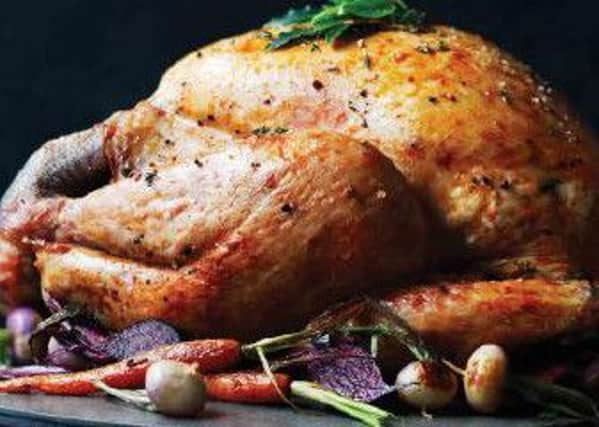Restaurant tip for your turkey, veg and Yorkshire puds


Looking back, it is strange to think that at the beginning of the 19 th Century Christmas was hardly celebrated at all - many businesses did not even consider it a holiday!
The typical Sunday lunch had been a staple of society as far back as the 15 th Century – often using beef, where average citizens who didn’t have open fires or ovens to roast the meat, would leave it with the bakers on their way to church – where the meat would be cooked in the cooling bread ovens – bread wasn’t baked on a Sunday back then.
Advertisement
Hide AdAdvertisement
Hide AdNow we are more accustomed to the Christmas turkey, but even that was a luxury up until the mid- 1950s! Although introduced to our shores some centuries before, in the 1930s buying a turkey cost the average worker a week’s wage. Now it costs a few hours’ work at most.
This is just a small snippet of the history of Christmas cooking and how broad and diverse it’s been.
So what tips can you use to lift your Christmas meal and future Sunday roasts?
Well, having a mum from Yorkshire, a guaranteed feature on our table this Christmas will be Yorkshire puddings. We take a cup of eggs and milk and whisk them together, slowly adding a cup of plain flour in batches. Let the mix cool in the fridge overnight, covered. On the day, line your oven trays with fat and heat in the oven at 200 degrees. Take your cold mix and give it another whisk before adding to your hot tray – when the cold mix meets the hot fat, it will give it that explosive rise that we all love to see.
Advertisement
Hide AdAdvertisement
Hide AdAs for the main attraction - your turkey - a good barometer of cooking time is 20 minutes per pound - so a 10 pound turkey will take about 3 hours 20 minutes. A temperature of around 165 degrees is recommended, but a little tip is to whack the oven up to 220 degrees and pre-heat - then put your turkey in at this temperature for the first 20 minutes. This gives the skin a good crisp and colour.
Bring it down to 165 for the remainder of the time and if you’re doing stuffing balls then try dropping them around the edge of your turkey dish for the last 20 minutes, so they can soak up all the juices.
A big tip to factor into your preparations is that the best thing you can do once your meat is cooked is to let it rest, for at least 30 minutes or so, basting it in its juices all the time.
For your veg this year, why not make your life easier and dice your root veg and roast them together in some butter – you’ll save time and plenty of pans! And if you’re worried about the dreaded brussel sprout dilemma, try slicing them thinly and frying them with some butter, shallots, garlic and smoked bacon; you’ll have a hard time finding anyone to say no to that!
From me, and all of the team at Prévost, we’d like to say an early Merry Christmas and a Happy New Year!
Lee Clarke is head chef at Prévost in Priestgate, Peterborough www.prevostpeterborough.co.uk